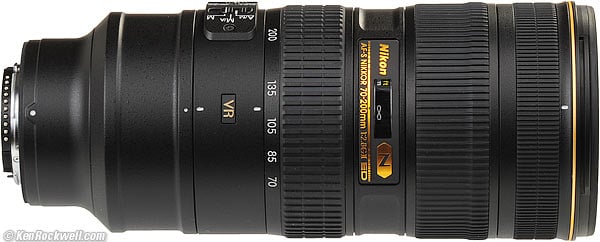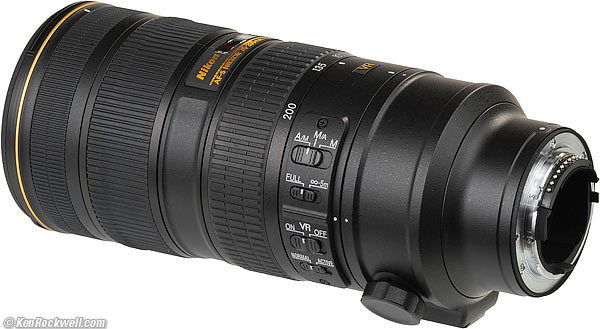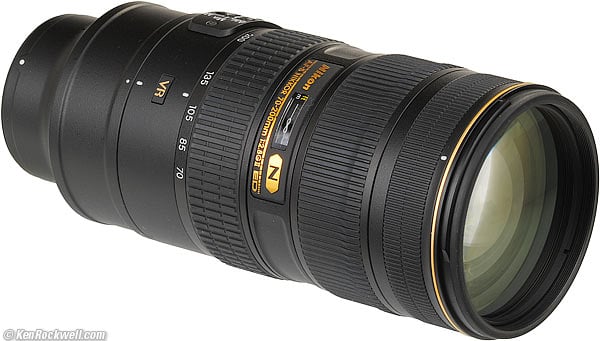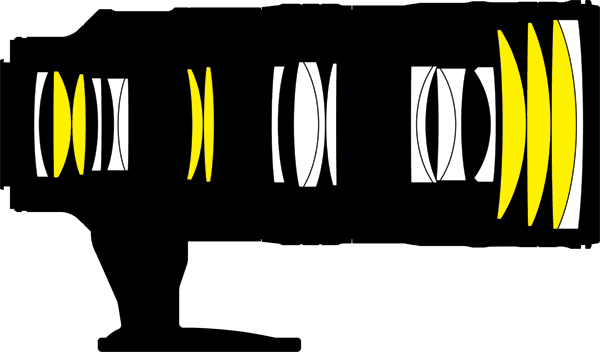- Joined
- Jul 10, 2008
- Messages
- 66,347
- Points
- 113
https://fstoppers.com/review/best-portrait-lens-youve-never-heard-nikon-135mm-f2-3099

The Nikon 135mm f/2 DC is a bit of a gem in the portrait game but as the title might suggest, you might not have heard of this lens. This may be due to one of a few reasons: The primary being that it’s a reasonably old lens; it hasn’t been updated optically in its nearly 25 years in the Nikon lineup. Another being that even if you have heard of it, it’s probably because it has gotten a bad reputation as a “soft focus” lens due to its unique Defocus Control feature. I was curious, so I bought one of these lenses myself to test out and the results were both surprising, and frustrating.
My first impression of this lens when I pulled it out of it’s box was “Wow, that front element is massive!” The 72mm filter size makes quite an impression. That exclamation was quickly followed by “Wow this lens looks old!” That may sound harsh, but the lens is nearly 25 years old and Nikon has done quite a lot of updating to the outward appearance of its other lenses since then.
That being said, it’s quite compact for a telephoto. It weighted nicely and its all-metal construction means it feels solid. The attached metal hood is also quite nice, although it makes it difficult to attach/remove the lens cap when it is out. It is also quite prone to sticking if you don’t push it back in properly.

So overall, I have no complaints here. It is a dated looking lens, but who really cares? It's solid and should stand up to whatever you throw at it. Besides, I’ve never had a client complain because my lens looked funny.
So what happens when this lens is put to task?
The first thing that I wanted to test was the legendary Bokeh of this lens owing not only to its fast aperture of f/2, but also a feature that has not been fitted to a Nikon lens since the 135mm f/2 and its little brother the 105mm f/2: Nikon calls it Defocus Control. I did a little research on this and it seems that when Nikon first introduced this lens in the United States and other English speaking countries back in 1991, they got the translation a bit wrong and it earned bad reputation as a soft focus lens. However, it seems that “Defocus” is just a translation of the Japanese word for Bokeh, so instead of a soft lens, it simply offers you the ability to control the out of focus areas of the picture. I have absolutely no idea how all of this is done from a technical standpoint, but I can show you how to operate it on the lens itself.
In addition to an aperture and focus ring, this lens also has a ring dedicated to its Defocus Control feature.

It looks complicated but the best way to look at it is to pick which aperture you plan to shoot on and then decide if you want to control the out of focus areas in front or behind the focus point. Once these decisions have been made, simply adjust the ring so that the marker is pointed to the aperture on which you are shooting.
If you would like to see exactly what this lens does when you’re changing the DC ring, the following image was locked off at f/2 and the Defocus control lens was rotated from Maximum Front Focused to Maximum Rear Focus and all points in between. The results are certainly dramatic.

Obviously this is an extreme example, but it demonstrates what this particular lens can do.
Now that we've covered the things that aren't in focus, let's focus on the things that are in focus.
I think I can best sum it up by saying that it is one of, if not the sharpest, f/2.8 lenses I’ve ever used. The problem, however, lies in the fact that this lens opens up to f/2. It is very sharp at f/2 in selective circumstances. If you put the sun behind your subject, you’re going to have severe Chromatic Aberration or Purple/Green fringes.

All of these are fixable in post, but it’s certainly a little annoying. With this lens, the best bet is to shoot at 2.5 or 2.8 to avoid the problems with CA. That of course begs the question, if I have to stop down to f/2.8, then what’s the point of the lens?
The answer for me is simple: It’s tack sharp and you get some of the best Bokeh of any lens I’ve used recently. Like this shot of my friend Taylor goofing off.
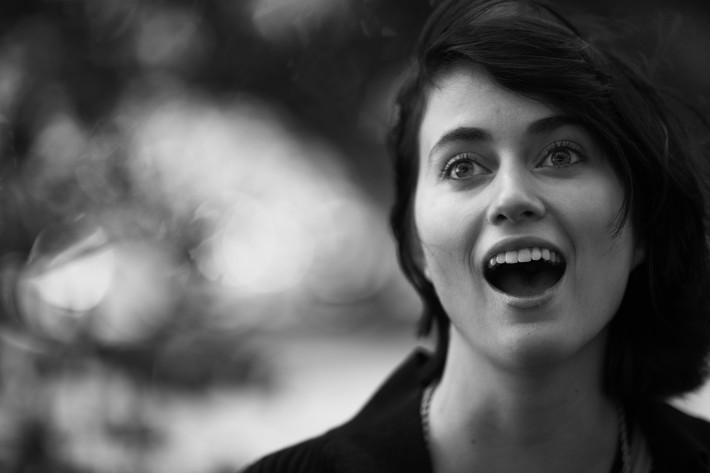
Next, let's move on to Autofocus.
So while the issues with Sharpness in less than ideal situations can be fixed simply by stopping down a few clicks or simply adjusting your light, the issues with Autofocus are a bit more tricky to deal with. The lens that I bought consistently front focused on subjects less than about 10 feet away. Luckily the D800 that this was tested on allowed me to go in and fine tune the Autofocus which nearly fixed the issue when maxed out at +20, but did not completely solve the problem. I learned to start focusing on ears, not eyes in order to get the eyes of my subject in focus. In addition to this, one of the major flaws with this lens is its lack of an automatic manual focus override. Instead of simply grabbing the focus ring and turning to make manual tweaks to the focus, you have to turn a ring on the camera that disengages the Auto Focus and then you can make manual adjustments. In other words, this is not a lens to run and gun with. This is a lens that makes you work for the amazing results that it can yield.
I should also note that this is most definitely not a sports lens as the Autofocus has a tendency to crawl along. This is a portrait lens so don't expect it to perform miracles with its autofocus.
Finally though, after all of that, it comes down to the bottom line: How much am I paying for this? Well the answer is $1,299 if you order from B&H. For a fast, prime lens this is actually a really good deal. Its closest competitor, the 85mm f/1.4g, will run you close to $1700 and the excellent 70-200mm f/2.8 will cost you very nearly $3000. With things in perspective, the 135mm is a great value for money.
What I liked:
Weight
Fast aperture
Bokeh
Solid Build Quality
Sharpness (at all apertures f/2.8 and beyond)
What Could Be Improved:
Chromatic Aberration at f/2
Sharpness at f/2
Autofocus Speed and Accuracy
Overall, I loved using this lens, but in the end it doesn’t suit how I shoot. I am primarily a wedding photographer and I need a lens that will be consistently sharp at all apertures and will focus quickly and accurately without me really having to think about it all that much. Unfortunately, this lens just wasn't what I needed. I ended up returning it.
That being said however, I don't want you to think of this as a negative review. When I had the opportunity to use this lens outside of the high-pressure environment of a wedding, this lens was incredible. It just takes patience to get the best out of it. I wish that I could have kept it, but unfortunately my budget for new gear is tight so I have to spend it where it’s needed and if I can’t use it for my paid jobs, then it doesn’t have a place in my bag.
If you have the time to be patient with it, The Nikon 135mm f/2 DC is hands down one of the best portrait lenses I’ve ever used. It’s an incredibly sharp lens. That, and short of its bigger, heavier, and much more technologically advanced brother, the Nikon 200mm f/2, it has the best bokeh of any lens I’ve ever used.
If I could ask Nikon to do one thing it would be to update this lens! The 135mm f/2 updated to the spec of the amazing 85mm f/1.4G would never leave my camera. That being said however, Sigma is reportedly working on a 135mm f/1.8 which has gotten me incredibly excited. I will be first in line to buy one of those if it is ever released.
Interested in buying one for yourself? Head on over to B&H and grab one.
*For very patient photographers
Posted In:

The Nikon 135mm f/2 DC is a bit of a gem in the portrait game but as the title might suggest, you might not have heard of this lens. This may be due to one of a few reasons: The primary being that it’s a reasonably old lens; it hasn’t been updated optically in its nearly 25 years in the Nikon lineup. Another being that even if you have heard of it, it’s probably because it has gotten a bad reputation as a “soft focus” lens due to its unique Defocus Control feature. I was curious, so I bought one of these lenses myself to test out and the results were both surprising, and frustrating.
My first impression of this lens when I pulled it out of it’s box was “Wow, that front element is massive!” The 72mm filter size makes quite an impression. That exclamation was quickly followed by “Wow this lens looks old!” That may sound harsh, but the lens is nearly 25 years old and Nikon has done quite a lot of updating to the outward appearance of its other lenses since then.
That being said, it’s quite compact for a telephoto. It weighted nicely and its all-metal construction means it feels solid. The attached metal hood is also quite nice, although it makes it difficult to attach/remove the lens cap when it is out. It is also quite prone to sticking if you don’t push it back in properly.

So overall, I have no complaints here. It is a dated looking lens, but who really cares? It's solid and should stand up to whatever you throw at it. Besides, I’ve never had a client complain because my lens looked funny.
So what happens when this lens is put to task?
The first thing that I wanted to test was the legendary Bokeh of this lens owing not only to its fast aperture of f/2, but also a feature that has not been fitted to a Nikon lens since the 135mm f/2 and its little brother the 105mm f/2: Nikon calls it Defocus Control. I did a little research on this and it seems that when Nikon first introduced this lens in the United States and other English speaking countries back in 1991, they got the translation a bit wrong and it earned bad reputation as a soft focus lens. However, it seems that “Defocus” is just a translation of the Japanese word for Bokeh, so instead of a soft lens, it simply offers you the ability to control the out of focus areas of the picture. I have absolutely no idea how all of this is done from a technical standpoint, but I can show you how to operate it on the lens itself.
In addition to an aperture and focus ring, this lens also has a ring dedicated to its Defocus Control feature.

It looks complicated but the best way to look at it is to pick which aperture you plan to shoot on and then decide if you want to control the out of focus areas in front or behind the focus point. Once these decisions have been made, simply adjust the ring so that the marker is pointed to the aperture on which you are shooting.
If you would like to see exactly what this lens does when you’re changing the DC ring, the following image was locked off at f/2 and the Defocus control lens was rotated from Maximum Front Focused to Maximum Rear Focus and all points in between. The results are certainly dramatic.

Obviously this is an extreme example, but it demonstrates what this particular lens can do.
Now that we've covered the things that aren't in focus, let's focus on the things that are in focus.
I think I can best sum it up by saying that it is one of, if not the sharpest, f/2.8 lenses I’ve ever used. The problem, however, lies in the fact that this lens opens up to f/2. It is very sharp at f/2 in selective circumstances. If you put the sun behind your subject, you’re going to have severe Chromatic Aberration or Purple/Green fringes.

All of these are fixable in post, but it’s certainly a little annoying. With this lens, the best bet is to shoot at 2.5 or 2.8 to avoid the problems with CA. That of course begs the question, if I have to stop down to f/2.8, then what’s the point of the lens?
The answer for me is simple: It’s tack sharp and you get some of the best Bokeh of any lens I’ve used recently. Like this shot of my friend Taylor goofing off.

Next, let's move on to Autofocus.
So while the issues with Sharpness in less than ideal situations can be fixed simply by stopping down a few clicks or simply adjusting your light, the issues with Autofocus are a bit more tricky to deal with. The lens that I bought consistently front focused on subjects less than about 10 feet away. Luckily the D800 that this was tested on allowed me to go in and fine tune the Autofocus which nearly fixed the issue when maxed out at +20, but did not completely solve the problem. I learned to start focusing on ears, not eyes in order to get the eyes of my subject in focus. In addition to this, one of the major flaws with this lens is its lack of an automatic manual focus override. Instead of simply grabbing the focus ring and turning to make manual tweaks to the focus, you have to turn a ring on the camera that disengages the Auto Focus and then you can make manual adjustments. In other words, this is not a lens to run and gun with. This is a lens that makes you work for the amazing results that it can yield.
I should also note that this is most definitely not a sports lens as the Autofocus has a tendency to crawl along. This is a portrait lens so don't expect it to perform miracles with its autofocus.
Finally though, after all of that, it comes down to the bottom line: How much am I paying for this? Well the answer is $1,299 if you order from B&H. For a fast, prime lens this is actually a really good deal. Its closest competitor, the 85mm f/1.4g, will run you close to $1700 and the excellent 70-200mm f/2.8 will cost you very nearly $3000. With things in perspective, the 135mm is a great value for money.
What I liked:
Weight
Fast aperture
Bokeh
Solid Build Quality
Sharpness (at all apertures f/2.8 and beyond)
What Could Be Improved:
Chromatic Aberration at f/2
Sharpness at f/2
Autofocus Speed and Accuracy
Overall, I loved using this lens, but in the end it doesn’t suit how I shoot. I am primarily a wedding photographer and I need a lens that will be consistently sharp at all apertures and will focus quickly and accurately without me really having to think about it all that much. Unfortunately, this lens just wasn't what I needed. I ended up returning it.
That being said however, I don't want you to think of this as a negative review. When I had the opportunity to use this lens outside of the high-pressure environment of a wedding, this lens was incredible. It just takes patience to get the best out of it. I wish that I could have kept it, but unfortunately my budget for new gear is tight so I have to spend it where it’s needed and if I can’t use it for my paid jobs, then it doesn’t have a place in my bag.
If you have the time to be patient with it, The Nikon 135mm f/2 DC is hands down one of the best portrait lenses I’ve ever used. It’s an incredibly sharp lens. That, and short of its bigger, heavier, and much more technologically advanced brother, the Nikon 200mm f/2, it has the best bokeh of any lens I’ve ever used.
If I could ask Nikon to do one thing it would be to update this lens! The 135mm f/2 updated to the spec of the amazing 85mm f/1.4G would never leave my camera. That being said however, Sigma is reportedly working on a 135mm f/1.8 which has gotten me incredibly excited. I will be first in line to buy one of those if it is ever released.
Interested in buying one for yourself? Head on over to B&H and grab one.
*For very patient photographers
Posted In:


